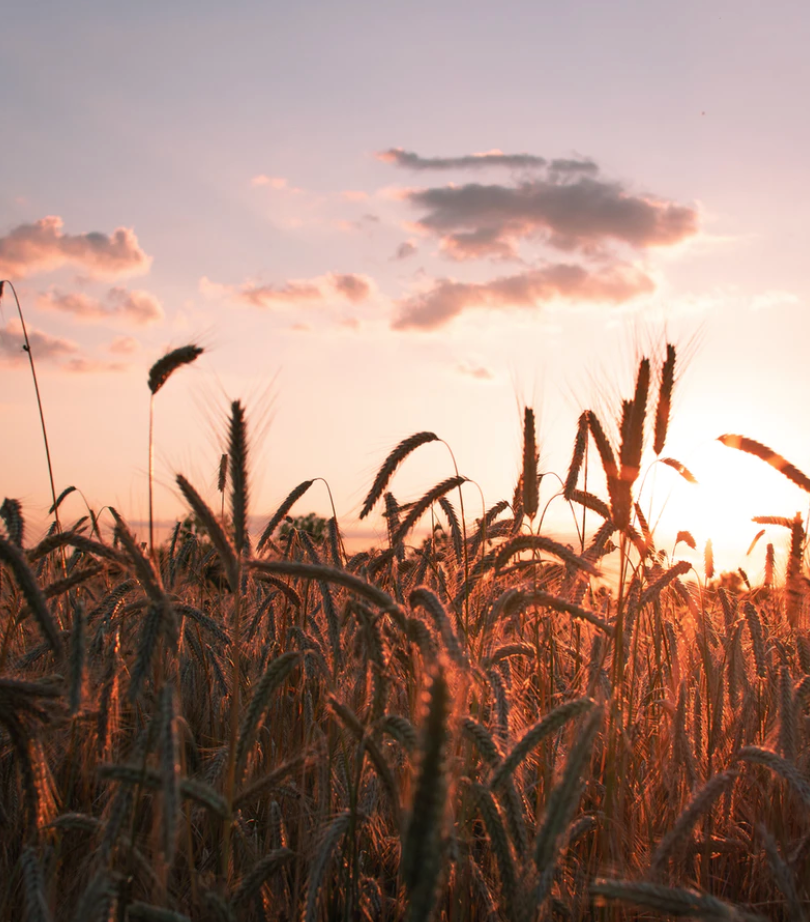Simple Solutions - Crop Rotation
The natural world is complex. Yet, at the same time, incredibly simple! If you can wrap your head around the basic principles of crop rotation, then you’ll better understand how agriculture works. Not just for yourself, to try out tricks and tests in the garden, but to gain knowledge of its effect on the whole world. You’ll benefit whether you have a garden or not!
You hear a lot about sustainable farming — but what does it mean? Understand crop rotation and you’ll fill a large part of the puzzle!
Crop rotation follows a very simple, year-by-year cycling of crops between different beds or areas in which they grow. You can even change the cycle of a bed within the same growing season. In short, no same crop is grown again and again in the same bed. The rotation of different varieties, plants and crops, is carefully selected to cycle the different nutritional and environmental requirements of each thing you harvest.
Understanding the need and purpose for crop rotation gives a clear vision of how unsustainable many modern farming techniques are.
Dissimilar plant varieties both feed and remove different nutrients from the soil. With certain plant varieties acting as soil ‘rejuvenators’ (re-introducing particular nutritional elements back into the soil). And others as heavy ‘feeders’ (sapping key nutrients from the ground). Because of a plant's relationship and exchange with the earth, re-growing the same crop year on year leads soil to being depleted and in lack of the proper nutrients.
Plants are known for their nutrition. It has to come from somewhere! The simple fix (along with the addition of extra nutrition from compost and natural fertilizers) is crop rotation.
Categorizing plant families, understanding their nutritional input and output, can allow any grower to cycle different plants in a way that maintains soil health and nutrient levels.
It’s simple and most of the work has been done for us! We already know what plants should follow others — read on!
Summary of Benefits:
Soil fertility/available nutrients: The correct cycling of crops allows one year’s growth to feed into the next, priming the soil for the next year's growth.
Pest control: Similar to nutritional demands, different plant varieties attract different pests and some even repel pests. For this reason, cycling crops can deter pests from inhabiting a growing space or even remove pests that may have affected an area.
Encouraging biodiversity: As you cycle your crops you’ll grow more variety. That’s good for you, the soil and the bugs!
Weed control: Blanketing crops (those with a dense canopy) will shade or even suffocate weeds. Meaning that as you rotate your beds, some of what you grow will do your weeding for you!
Getting to know the family:
Groups of vegetation are easy to learn after a few hands-on seasons of sowing and harvesting. Most can be identified from seed — for example, the brassica family all start from the seed with two doubled fanned leaves — shaped a little like a butterfly. This makes them easy to identify as the ‘brassica family’. However, some families are less easy to identify. The Solanaceae family harbors both potatoes and tomatoes. Looking at their harvest, most would not put these two crops in the same family! There are four key groups (legumes, roots, leaves and fruits) however, these are not the most useful nor applicable groups when it comes to getting your rotation right.
Better detailed key groups and some of their varieties are as follows:
Legumes: Peas & Beans…
Brassicas: Broccoli, Brussels Sprouts, Kale, Cabbage, Cauliflower, Raddish, Swede, Rocket, Turnip…
Onions: Chive, Charlotte, Garlic, Spring Onion, Red Onion, Leek...
Solanaceae: Potato, Tomato, Pepper, Aubergine...
Roots: Parsnip, Carrot, Fennel, Celery, Dill...
Squash & Marrow: Courgette, Squash, Pumpkin, Cucumber, Melon…
Beet Family: Beetroot, Chard, Spinach...
Misc: Salad, Sweetcorn, Oregano, Asparagus, Okra, Fruits, Rosemary, Sage...
The Circle of Life:
The list above has been placed in order of correct rotation. With the exception of the final ‘Misc’ category. Anything that falls into this category (most salads, herbs and many other greens and vegetables along with all fruits) can be grown wherever and wherever suits! Of course, things from certain categories can jump ahead of the order that I have laid out here (I aimed for an order that was as in-depth as possible). This is why I personally think it best to do your research based on exactly what is growing in your garden and exactly what should follow it. This will avoid the easy mistake of mixing categories as they are not always so clear cut and you may also find you have more options than what the ‘next category’ may offer.
The World Needs to Hear This!
Understanding the need and purpose for crop rotation gives a clear vision of how unsustainable many modern farming techniques are. I’m specifically referring to those that involve growing vast areas of mono-crops (one crop variety) and rely on chemical fertilizers and pesticides to counter the issues that this presents.
Crop rotation is just one basic principle that helps to remove much of the need for artificial fertilizers and pesticides that will lead to damaged soil — more on that in another article! Local, organic and smart farming has answers that lab dwellers and technicians are trying hard to chemically produce! By understanding the issues that have arisen in modern agriculture, we can be prepared for the alternative that we must soon seek.
